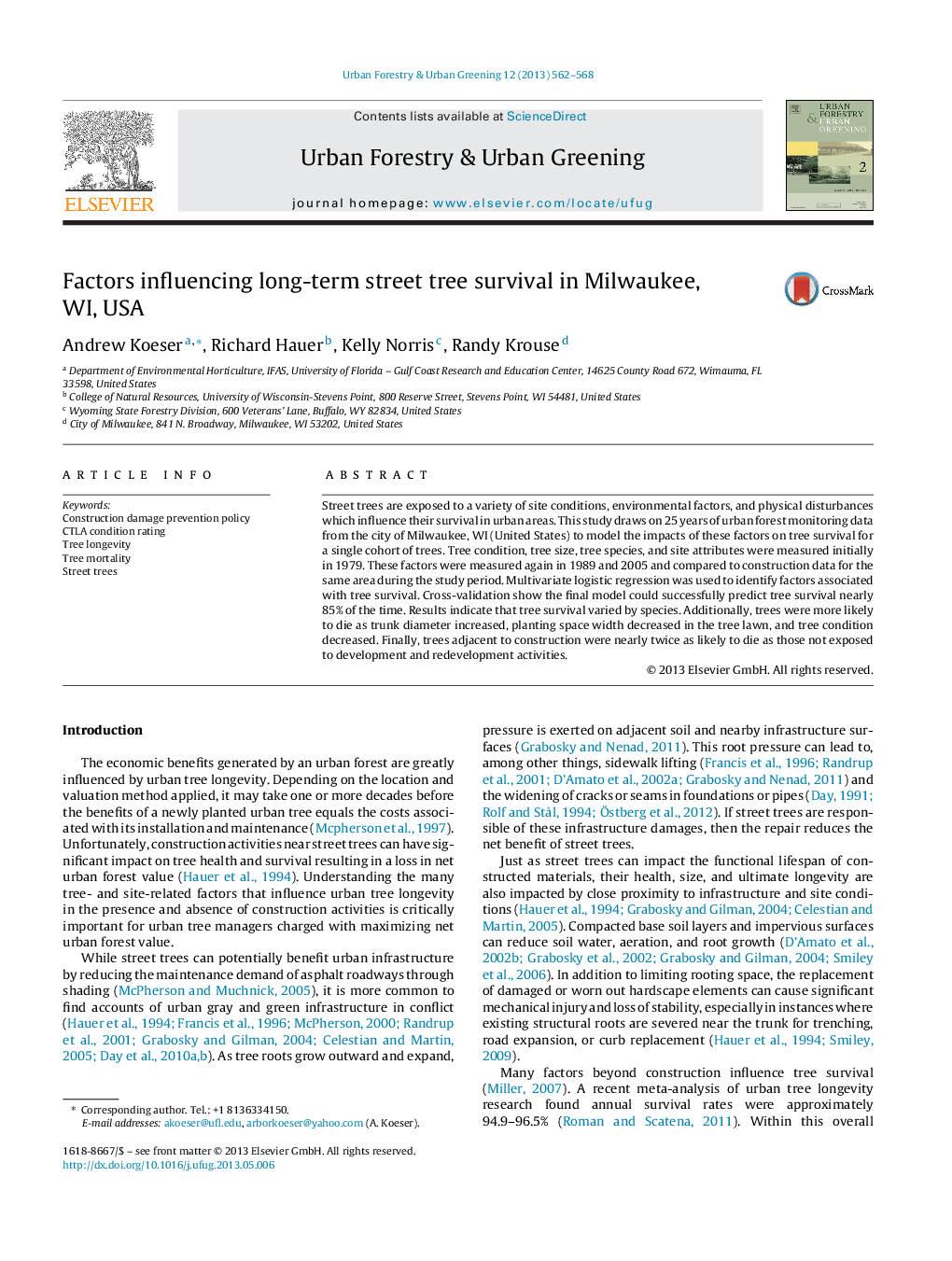| Article ID | Journal | Published Year | Pages | File Type |
|---|---|---|---|---|
| 94096 | Urban Forestry & Urban Greening | 2013 | 7 Pages |
Street trees are exposed to a variety of site conditions, environmental factors, and physical disturbances which influence their survival in urban areas. This study draws on 25 years of urban forest monitoring data from the city of Milwaukee, WI (United States) to model the impacts of these factors on tree survival for a single cohort of trees. Tree condition, tree size, tree species, and site attributes were measured initially in 1979. These factors were measured again in 1989 and 2005 and compared to construction data for the same area during the study period. Multivariate logistic regression was used to identify factors associated with tree survival. Cross-validation show the final model could successfully predict tree survival nearly 85% of the time. Results indicate that tree survival varied by species. Additionally, trees were more likely to die as trunk diameter increased, planting space width decreased in the tree lawn, and tree condition decreased. Finally, trees adjacent to construction were nearly twice as likely to die as those not exposed to development and redevelopment activities.
